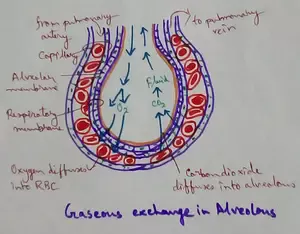Taxonomical Hierarchy
The word taxonomy means an arrangement. It is the science for arranging living organisms according to the characteristics they share. The word hierarchy means an arrangement of list of things in an above, below or same level. Taxonomical hierarchy is the part of biological science in which plants, animals, micro organisms etc. are sequentially arranged in descending order during the classification of organism. A Swedish scientist Carolues Linnaeus is called the father of taxonomy because he was the first to observe and categorize the living organism into different category and applied binomial nomenclature for them. He used only five categories first-class, order, genus, species and variety. Then the last one was discarded and three were added- kingdom, division, and phylum.
Taxonomical hierarchy is consist of eight major taxonomic ranks-domain, kingdom, phylum, class, order, family, genus, species. Each rank is consist of subgroups and super groups according to the requirements of taxonomical hierarchy.
Taxon: It is any level of grouping of organisms. e. g. Mammals, roses, reptiles etc.
Species: It is a natural population or group of natural populations of individuals that are genetically distinct and reproductively isolated with similar essential morphological traits. It is also genetically closed system because member do not interbreed with members of other species. It is the basic of taxonomic hierarchy. At times, hybridization occurs between two different species. Interbreeding cannot be applied for delimitation of species in case of prokaryotes’ and some species which lack sexual reproduction. In this case morphological characteristics are used.
Genus: It is an assembly of related species which evolved from some n ancestors, having common characters called correlated characters. Genus are either monotype or polytope.
Family: A group of related genera with certain similar characters.
Order: A group of related families with some common features.
Class: Organisms made of one or more related order. It ends with suffix -phyceae, opsida, ae but in case of animals it differs.
Phylum: All organisms belonging to various classes having a few common characters. In this division the given suffix -phyceae and the subdivision -phytina.
Kingdom: All organisms that shares some common characters. It is the highest rank of taxonomic hierarchy. E.g. kingdom -Animalia, kingdom planta.
Species and genus form together binomial nomenclature. Suppose binomial nomenclature of man is Homo sapiens. Here Homo is genus and sapiens is species. It is written in italics and when hand written it is underlined.
Importance of taxonomical hierarchy are:
1. Categorize living organism easily.
2. Study the development, genetics, cytology, physiology, pathology and evolution of all living organism.
3. Study the characteristics, habits, affinities habitats of different organisms can be done by taxonomic hierarchy.
4. Easy to study the living organism of same species and their connections.
5. Food chains, food webs and biological control cannot be known without taxonomy.
6. All breeding programmes require the knowledge of different traits present in various varieties, subspecies and related species.
Domain-Living
Kingdom-Animalia
Phylum-chordate
Class-Mammalia
Order-Carnivore
Family-Felidae
Genus-Panthera
Species-tigris
Questions
1. Who is the father of taxonomic hierarchy?
Answers: Linnaeus is called the father of taxonomic hierarchy.
2. Define classification.
Answers: It is the method of grouping animals according to their similarities and differences.
3. why are scientific name preferred over common names?
Answers: It is used to avoid confusion of names as it occurs in case of common names used for a particular organism in a particular language.
From Taxonomical Hierarchy to HOME PAGE
Recent Articles
-
What Is Plasma? | Blood Plasma | Proteins | Nutrients | Cholesterol
Nov 07, 25 10:29 AM
Blood is a mobile fluid which is a connective tissue and is derived from the mesoderm like cell any other connective tissue. Colour of blood is reddish and that flows inside the blood vessels by means… -
Disorders of Respiratory System | Tuberculosis | Pleurisy | Emphysema
Oct 28, 25 11:39 PM
Tuberculosis is very common disease and is caused by a type of bacteria called Mycobacterium tuberculosis. This disease causes different trouble in the respiration and infection of several parts of th… -
Regulation of Respiration | Respiratory Centres | Inspiratory Area |
Oct 14, 25 12:13 AM
Respiratory Centre is the area that controls the rate of respiration and it is observed to be located in medulla oblongata and pons. Respiratory Centre has the following will dispersed components like… -
Explain Transport of Gases | External Respiration | Tissue Respiration
Oct 09, 25 11:35 PM
In humans gaseous exchange is completed in the following ways the steps are - External Respiration or Breathing - Breathing in false taking in of Oxygen and giving out of carbon dioxide in the body. M… -
Kind and Number of Teeth | Location of Teeth in Mouth | Care of Teeth
Sep 11, 25 12:52 AM
Kind and Number of Teeth





New! Comments
Have your say about what you just read! Leave me a comment in the box below.